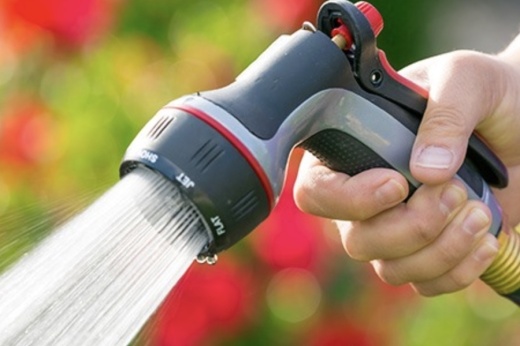San Antonio Water System officials said they will seek out public input on potential tighter rules targeting water wasters just as San Antonio-area residents and merchants cope with a lingering drought.
SAWS staff briefed the water system’s board of trustees Aug. 1 on proposed water conservation rule changes.
SAWS officials said 6% of top residential customers used 21% of water provided to households.
SAWS officials added that the water level in the agency’s main J-17 Bexar County well monitoring the Edwards Aquifer dropped from 629.4 feet to 628.6 feet between July 30 and 31.
According to SAWS, the San Antonio area received 12.86 inches of rain in 2023 as of Aug. 1—6.09 inches short of the normal year-to-date local rainfall amount.
SAWS recently announced that despite pumping reductions by the Edwards Aquifer Authority, it would stick with Stage 2 watering rules, which allows watering from 7-11 a.m. and 7-11 p.m. one day a week based on the last number of a user’s street address.
SAWS Vice President of Conservation Karen Guz said there is a need to re-emphasize the importance of water conservation among users. She said proposed revisions to current watering stages include changing enforcement from a municipal court citation to an additional charge on the water bill.
Right now, customers who do not comply with watering rules are cited with fines costing up to $150 for first-time offenses. More than 3,000 water waste citations have been issued so far this year, and neighborhood patrolling will continue, including inside gated communities, according to SAWS.
Guz said the proposed new enforcement plan could also include costs associated with violating watering rules, with an escalating scale depending on use and drought stage.
According to Guz, while SAWS plans for conditions as bad or worse than the droughts of record in the 1950s, recent developments have shifted a focus toward more efficient, enforceable options.
“We want to update the drought management watering rules to be more fair, effective and efficient,” Guz said in a statement. “We think it’s important to shift away from a criminal process with a citation cost that hasn’t changed in 20 years to one that is more efficient and can apply to all SAWS customers equally—including those that live in separately incorporated cities where it is currently a challenge to use a city of San Antonio citation.”
Guz said the effect of a growing San Antonio-area population on the local water system is magnified with the inclusion of irrigation systems in almost all new housing, especially in communities outside San Antonio city limits.
“While most customers have followed drought rules, we need better tools to influence a small percentage of customers who use very large amounts to water their landscapes in violation of our rules,” Guz said in a statement. “In 2022, just 6% of our top residential water customers used 21% of water provided to household water accounts. In contrast, the lowest 52% of residential water users accounted for only 23% of water.”
Guz said SAWS will have meetings with San Antonio City Council and formal discussions with community members and stakeholders over the next six to eight months. She added that, afterward, the SAWS board may act on proposed changes to watering rules, followed by City Council’s consideration of a fee structure that would recover cost of enforcement.





